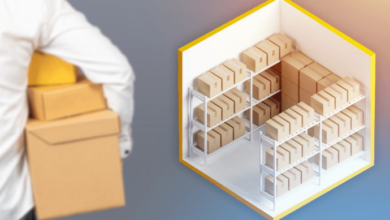Essential Fire Safety Tactics: Simple Steps to Prevent Fires

Introduction
Understanding how to stay safe from fires is super important for everyone. In this article, we’ll explore different ways to prevent fires and protect our homes and places where we work or play. Also, we’ll look at how knowing about fire risks can help us stop them before they start. By the end of this article, you’ll learn about easy steps that can make a big difference in keeping safe. So, let’s dive in and find out how we can all be fire safety heroes!
Understanding Fire Risks
First off, fires can start from simple things like leaving a candle burning without watching it or from a stove that’s not turned off. Also, things like frayed wires or overloading electrical outlets with too many plugs can be risky.
Next, we’ll talk about how easily fires can start in certain areas of a house or building. For example, kitchens and garages are common places where fires can begin because of cooking and stored chemicals. Furthermore, during holidays, decorations like Christmas lights can increase the chance of a fire if not used safely.
By understanding these common causes, we can be better prepared to spot dangers early. Importantly, keeping an eye on these areas and being careful with how we use electrical devices and open flames will make a big difference. This way, we can all help prevent fires and keep our homes and schools safe. Let’s make sure to be alert and aware, because a little attention can go a long way in preventing fires.
Key Elements of a Fire Safety Strategy
Firstly, it’s crucial to conduct a fire risk assessment. This means looking around your home or workplace to find where fires could start and figuring out how to prevent them. It’s like being a detective, but forfire safety strategy!
Additionally, having the right tools and plans in place is super important. This includes installing smoke alarms in all key areas, like bedrooms and kitchens. Also, having fire extinguishers handy, especially in places where a fire might likely break out, is essential. Plus, everyone should know where these tools are and how to use them.
Moreover, keeping emergency exits clear is a must. This way, if a fire does happen, everyone can get out quickly and safely. And don’t forget about practicing fire drills! Practicing what to do in case of a fire makes sure that if the real thing happens, everyone knows how to stay calm and escape without getting hurt.
By putting these strategies into action, we can greatly reduce the risk of fires and keep everyone safer. Let’s keep learning and preparing because being ready is the best way to protect ourselves and others.
Effective Fire Prevention Techniques
Fire prevention strategies, first off, it’s really important to always check that appliances like ovens, stoves, and heaters are turned off when you’re not using them. This simple step can stop a fire before it even starts.
Also, make sure to keep anything that can catch fire, like paper, clothes, and curtains, away from heaters or candles. Plus, don’t overload electrical outlets with too many plugs—it’s a common mistake that can lead to dangerous fires.
Another good tip is to regularly check the wires of your appliances. If you see any that are frayed or worn out, it’s time to replace them. It’s a quick fix that can make a big difference. Moreover, cleaning out lint from the dryer after each use is a must because built-up lint can catch fire easily.
By following these simple tips, you’re taking big steps to prevent fires. Let’s remember to be cautious and vigilant—keeping an eye out for these risks helps everyone stay safe and sound.
Preparing for Emergencies
One of the most important things to do is to have a clear evacuation plan. This means everyone in your home or at your workplace knows exactly where to go and what to do if there’s a fire. Plus, make sure to practice this plan regularly so that it becomes easy to remember.
Next, it’s crucial to know how to use a fire extinguisher. There are different types for different kinds of fires, so learning which type to use and how to operate it can be a lifesaver. Also, keep these extinguishers in places where you can grab them quickly, like in the kitchen or near the exit.
Moreover, holding fire drills can make a big difference. When you practice escaping from a fire, it helps everyone stay calm if the real thing happens. So, try to have these drills a few times a year.
By being prepared and practicing these steps, you boost your chances of staying safe. Always remember, knowing what to do in a fire is just as important as trying to prevent one.
Learning and Educating Others
Firstly, families should talk about fire safety at home. Parents can teach kids simple rules like stop, drop, and roll and the dangers of playing with matches or lighters. Schools can also play a big part by having regular lessons on fire safety. This way, kids learn early on how to be safe.
Additionally, workplaces should provide training sessions for all employees about fire risks and safety procedures. This helps ensure that everyone knows what to do in an emergency. Plus, having clear signs and instructions about what to do in case of fire can make a big difference.
By sharing knowledge and encouraging discussions about fire safety, we can create safer communities. Let’s all take the responsibility to learn and teach others, because together, we can help prevent fires and protect our friends, families, and coworkers.
Final Words
By understanding fire risks, setting up a good safety strategy, practicing prevention tips, preparing for emergencies, and educating everyone about fire safety, we can really make a difference. Always remember, being informed and ready can help us protect ourselves and those around us from fire dangers. Let’s put these tips into action and work together to create a safer environment for everyone. Keep safe and stay alert, because every bit of effort counts in preventing fires!





